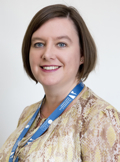More that unites us?

Audrey McCulloch asks: what would persuade 10 membership organisations to set aside their own agendas and gather together for discussion and collaboration?
Answer: Diversity. Defined by the Oxford English Dictionary as 'the state of being varied’ – but, more specifically, what ‘diversity’ means for scholarly communications, why it is important and how we can promote it.
This gathering happened at the recent Society for Scholarly Publishing (SSP) conference in Boston (June 2017). Around the table or on the phone were representatives from the American Association of University Presses, (AAUP), the Association of Learned and Professional Society Publishers (ALPSP), the Council of Science Editors (CSE), the International Society of Managing and Technical Editors (ISMTE), the International Association of Scientific, Technical and Medical Editors (STM Association), Open Access Scholarly Publishers Association (OASPA), NASIG, Professional Scholarly Publishing Division of the Association of American Publishers (PSP), UKSG, and representatives of SSP, who organised the meeting.
There was a great deal of enthusiasm around the table, and representatives agreed that work by the membership bodies to support the industry would have huge benefits, particularly if we were working together. The need for such industry support and collaboration was demonstrated from the participants in the room; women out-numbered men 11:5, and white participants out-numbered black by 15:1.
There was a discussion about initiatives already in place, with some organisations doing better than others. For example, the AAUP has a Mellon Foundation-sponsored Diversity Fellows program, which includes placements at university presses for up to a year. But few others had such dedicated programs. It was clear we needed to lead from the front.
There is some work already ongoing in this area in the UK. EQUIP (Equality in Publishing) is run by the Independent Publishers Guild (IPG) and the UK Publishers Association (PA). Although a UK-based initiative, it is applicable globally. EQUIP has a charter that it asks members to sign, with suggestions for HR, corporate social responsibility, skills and training.
The group discussed two key areas and touched on several others:
Gender. There are significant numbers of women compared to men in the publishing industry, as demonstrated by different surveys. In a survey 2015 conducted by ALPSP, CSE, SSP and the STM Association (‘the Association Survey’) and Digital Science, 62 per cent of the respondents were female compared to 36 per cent male. The Publisher’s Weekly 2016 Salary Survey noted a 74 per cent to 26 per cent female to male split in respondents. These surveys do not absolutely quantify the balance of gender in scholarly publishing, although they are likely to provide an indication.
Race. The Association Survey found 90 per cent of 504 survey respondents classified themselves as white/caucasian, with five other race classifications making up the rest of the respondents. Almost identical results were reported with the 830 respondents of the Publisher’s Weekly Salary Survey. This data compares with the 2015 US Census Bureau data, which reports that 61 per cent of the US population is white. In the UK, however, the survey data more closely matches overall population categorisation (last Government published data, 2011).
The library community and reports a similar lack of ethnic diversity, with ALA’s 2017 member survey data reporting 87 per cent white/caucasian members – little different from its 2014 data.
Other data. Beyond these two measurables, data on the make-up of the scholarly communications industry is less well defined. Other key metrics include age, disability, culture/religion/beliefs and regional (geographical) diversity. It is highly likely that the scholarly communications industry is missing a significant talent pool.
What now?
It was clear from the group’s discussions that diversity was a huge subject, with many different facets. Understanding even the baseline is a significant undertaking but at the end of discussions, the group considered it was something we should be working on together.
How do we get to an understanding of where the industry is now? Reluctantly it was agreed that a(nother) survey will likely be involved, but, if we don’t gather the data, how else can we understand where we are now and start to take advantage of the benefits diversity can bring. If we don’t have a clear baseline, how do we know the groups we have failed to attract to the industry, and what we need to do to effect change? Any such survey needs to overcome the hurdle of self-selection in survey respondents.
The group have agreed to continue collaborating with the goal of providing guidance, support and tools where appropriate, to broaden horizons and enrich the skills and talent we have.
We know we can’t do it all ourselves, however, and if you have thoughts, comments, suggestions, then get in touch with your organisation's team members. And if you should see different membership organisations’ staff putting their heads together over a glass of wine, now you know why!
Audrey McCulloch is chief executive of the Association of Learned & Professional Society Publishers






